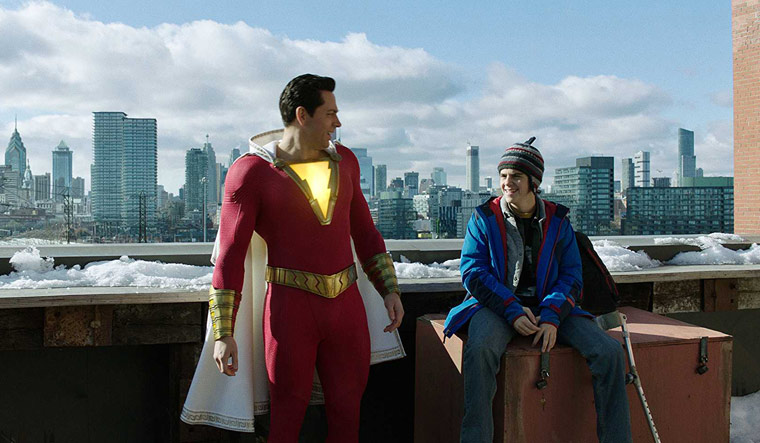A curious coincidence has taken place in the world of superhero fiction. There are two Captain Marvels battling it out on the big screen right now, one from Marvel and one from DC, and each of them carries the burden of rescuing their respective cinematic universe.
Marvel’s Captain Marvel—a billion-dollar box-office hit—features the fantastic Carol Danvers. After the shocking conclusion of the Avengers: Infinity Wars, the onus of saving the day in the Marvel Cinematic Universe (MCU) was left to the golden-haired warrior.
DC’s Shazam!—featuring a character who was known as Captain Marvel decades before Marvel Studios pinched the copyright for the name—is instead a brilliant infusion of colour into the increasingly dark-hued and gloomy DC Extended Universe.
The dilemma in the DC universe is not one of plot. It is one of brightness. Metaphorically and cinematically, DC films have been dark for a while. It is a problem, for fans, that began with the release of Man of Steel, the first film in the DC Extended Universe (DCEU). Zack Snyder turned earth’s most beloved superhero into a brooding, frowny superhuman with morality issues. For fans of Superman, the film denied viewers the simple satisfaction that comes with wish fulfillment—that staple of what happens when an ordinary person gets extraordinary powers.
Shazam! is all about wish fulfillment. Its premise is akin to something a kid would think up in a recess break brainstorming session for superhero ideas—a wizard gives a 14-year-old kid named Billy Batson the ability to transform into a superhero by just saying “Shazam!” out loud.
However, Billy is not the first person that the wizard turns to. It turns out that not everyone can become a superhero, something that Mark Strong’s character, Thaddeus Sivana, learns when he is denied the wizard’s super-abilities and told off for not being good enough. If Billy represents a child’s excitement at gaining superpowers and recognition, Thaddeus represents the frustration that comes with being told you are not good enough for greatness. Strong delivers a powerful performance as the villain of the piece.

Shazam! is essentially a film about a child put in a superhero’s body. He uses his newly found adult pass to buy beer, visit strip clubs, and escort his foster-home chuddie buddy Freddy Freeman out of school. The two do what anybody would do in the smartphone era on discovering a YouTube-friendly event—film and monetise! Billy performs superhero stunts for the camera and, in general, enjoys his superpowers to the maximum.
Until this film, David F. Sandberg was better known for making horror movies like Lights Out (2016) and Annabelle: Creation (2017). But in Shazam! he executes a textbook implementation of a light-hearted superhero origin story. The film is a throwback to the golden era of comic book heroes, a period where the good guys win and the smiles are golden and all-American.
Altogether, the film is a compelling watch, filled with funny moments and well-timed punchlines. It is a refreshing addition to the DC universe, but not one that viewers would think about too much on their way back from the movie theatre. It is a light-hearted watch in an era of DC films that took themselves too seriously (until, arguably, Aquaman).
Does Shazam! make the DC Extended Universe great again? Sort of. More importantly, it restores the pedigree of a superhero whose comics outsold Superman by millions of copies, when both were in print during the early 1940s. It may not be all that memorable, but it is good.
Film: Shazam!
Director: David F. Sandberg
Starring: Zachary Levi, Asher Angel, Djimon Hounsou, Mark Strong, Jack Dylan Grazer
Rating: 3/5



